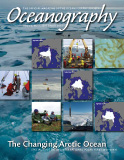First Paragraph
The Svalbard Research Experience for Undergraduates (REU) program, initiated in 2003, provides a unique, field-based research experience for US undergraduates in Arctic Quaternary geology and climate change. The Svalbard archipelago, between 74° and 81°N latitude in the North Atlantic, lies at the northern end of the warm Gulf Stream current and therefore is sensitive to subtle climate and oceanographic changes. Svalbard has warmed considerably during the last 90 years, and climate proxies indicate even greater Holocene climate variability. Our program has two main purposes: to train young scientists in cutting-edge, Arctic field research methods, and to reconstruct climate changes of the past 5,000 years from layered sediments in lakes and fjords.

